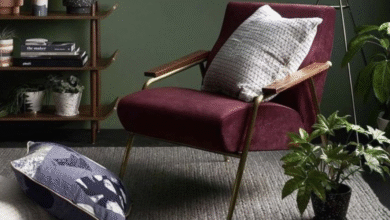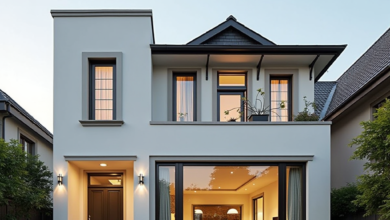Warm and Cool Colors: The Difference and Their Best Uses in Interior Design
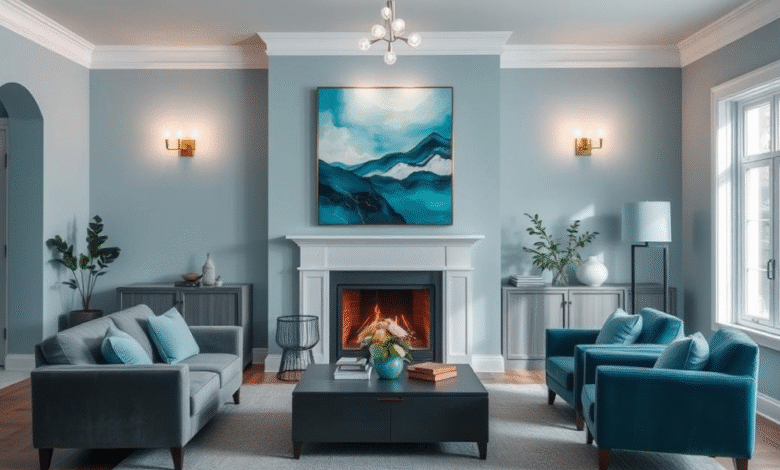
Colors in interior design fall into two main groups: warm and cool. Warm colors, like reds and oranges, make a space feel cozy. Cool colors, such as blues and greens, bring calmness. Knowing the difference helps create a space that shows your personality and style.
In interior design, colors set the mood of a room. The right mix of warm and cool colors makes a space welcoming and useful. Warm colors energize a room, while cool colors soothe it. Mixing them well creates a beautiful and balanced space.
Exploring colors in interior design shows how warm and cool colors shape different moods. They help make spaces for gathering or personal retreats. Knowing about warm and cool colors lets you make your space truly yours.
Table of Contents
Key Takeaways
- Warm colors can add energy and warmth to a room
- Cool colors can create a calming and serene atmosphere
- Balance is key when combining warm and cool colors
- Colors in interior design can greatly impact the mood and tone of a room
- Understanding the difference between warm and cool colors is essential for creating a harmonious space
- Warm and cool colors can be used to create different atmospheres and moods in a room
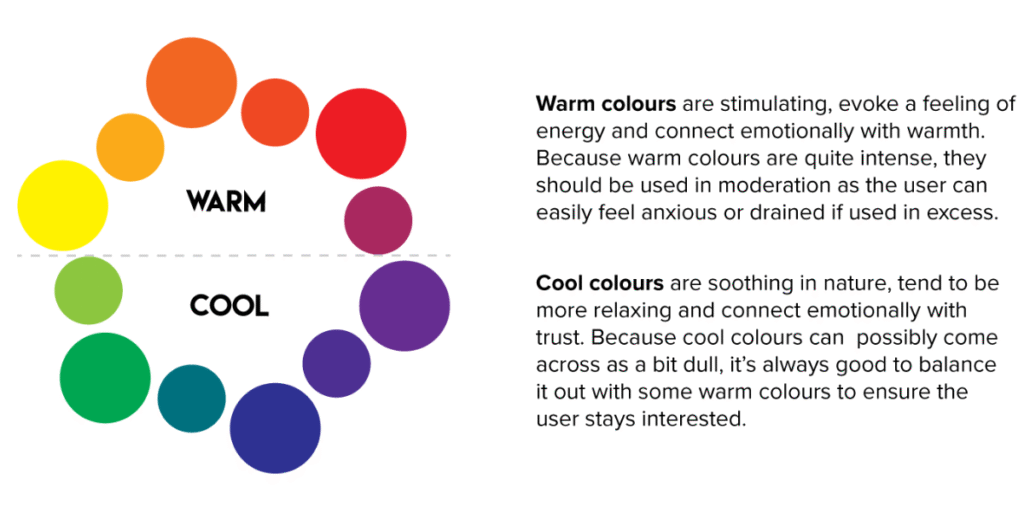
Understanding Warm and Cool Colors in Design
Colors in the home greatly affect the mood and feel of a space. Warm colors like red, orange, and yellow bring energy and warmth. Cool colors, such as blue, green, and purple, create calm and serenity. Knowing the difference between these colors is key to choosing the right colors for your home.
Colors and psychology are closely linked. Color psychology principles help you pick colors that improve your mood and well-being. This way, you can make a space that relaxes, boosts productivity, or entertains, based on what you need.
Let’s explore the color temperature spectrum. Warm colors remind us of sunlight and warmth. Cool colors feel like water and shade. This difference changes how we see and feel these colors in our surroundings.
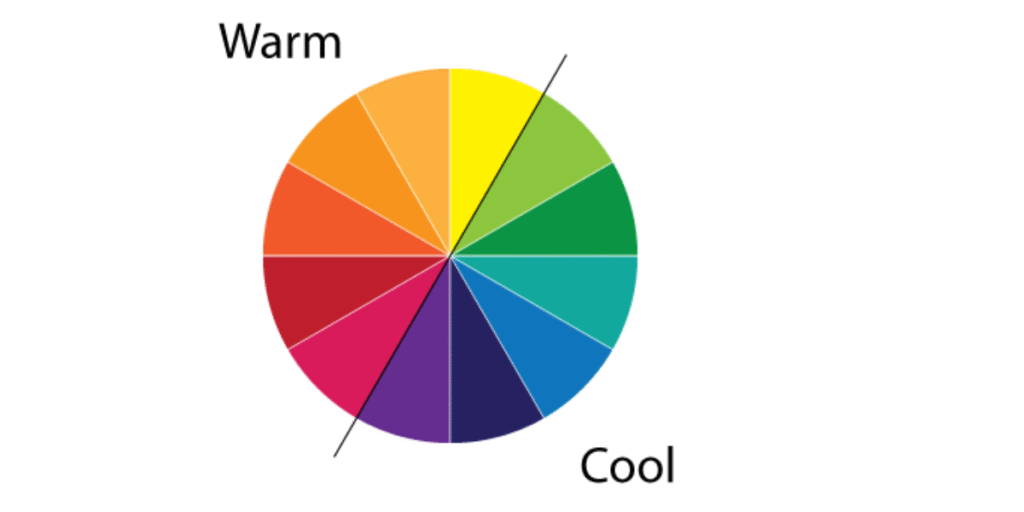
Key Characteristics of Warm and Cool Colors
- Warm colors: tend to advance, creating a sense of energy and warmth
- Cool colors: tend to recede, producing a sense of calmness and serenity
Understanding warm and cool colors helps you use colors wisely. This way, you can create a space that matches your personality and lifestyle.
The Psychology Behind Color Temperature
Research shows that different colors can make us feel different ways. Warm colors like reds and oranges make us feel energized. Cool colors, such as blues and greens, help us relax.
Choosing the right colors for a room can change its feel. Think about what the room is for, how much light it gets, and who uses it. For example, a bedroom might need cool colors for calm. A home gym could use warm colors to energize.
Color psychology helps us understand how colors affect us. Using this knowledge, we can pick colors that make us feel better. This can improve our happiness and quality of life.
When picking colors, consider a few things:
- Room purpose: Different activities need different feels, which colors can create.
- Natural lighting: The light in a room changes how we see colors.
- Personal preferences: Our likes and cultural backgrounds shape our color choices.
Warm Colors and Their Impact on Spaces
Designing a living room with warm colors can make it cozy and inviting. Warm colors like reds, oranges, and yellows bring energy and warmth. They’re great for living rooms.
To keep things balanced, try the 60-30-10 rule. This means 60% of the room should be a main color, 30% a secondary, and 10% an accent. This stops the room from feeling too warm. For instance, use beige or brown for 60% of the walls. Then, add blue or green furniture and decor for 30%.
- Use reds and oranges for accent walls or furniture.
- Add yellow tones through lighting or decor.
- Bring in natural materials like wood or stone for warmth.
Using warm colors in your living room makes it welcoming. Just remember to mix them with cooler tones to keep things balanced.
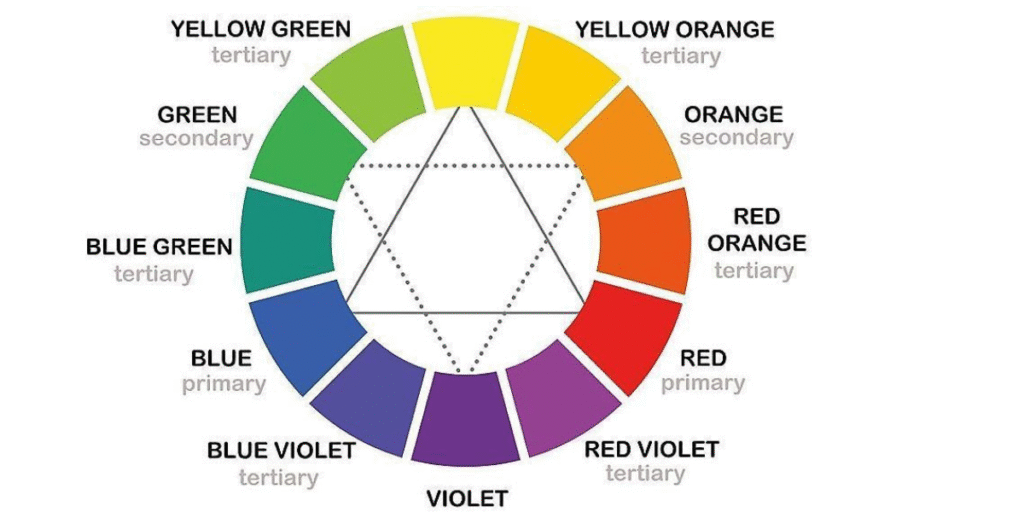
Cool Colors and Their Influence on Room Atmosphere
Cool colors like blues, greens, and purples are key to a calm home. They help lower stress and make you feel relaxed. You can use these colors in many ways, like painting walls, picking furniture, and choosing accessories.
Here are some cool color schemes for your home:
- Soft blue and white for a calming bedroom
- Mint green and neutral tones for a relaxing bathroom
- Lavender and gray for a soothing living room
Using cool colors in your decor can change your space’s feel. The right colors can make your home peaceful and calming. This helps you relax and lowers stress.
Creating Balance in Living Spaces with Color Temperature
Using colors in your home is key to creating a cozy and inviting space. It’s important to balance warm and cool tones. This balance makes your living area feel both comfortable and relaxing.
Start by thinking about the natural light in your space. It affects the color temperature. Choose colors that complement the light to create harmony in the room.
Mixing Warm and Cool Tones
To mix warm and cool tones, pick colors that go well together. For instance, warm beige and cool blue work well together. You can also use the 60-30-10 rule for a balanced look.
Seasonal Color Adjustments
Seasonal color changes can also help balance your space. Adjusting colors to match the season can make your home feel cozy. Use warmer colors in winter and cooler ones in summer.
By following these tips, you can make your home a cozy and inviting place. Remember to think about natural light, mix colors, and adjust for the season. This will help you achieve the perfect balance.
How Room Size Affects Color Temperature Choices
The size of a room greatly influences the color temperature you choose. It’s important to balance and harmonize colors in your space. In small rooms, cool colors can make the space feel bigger. Meanwhile, larger rooms can handle warmer colors, creating a cozy feel.
When designing a room, consider its size and color. For example, a small room with a low ceiling looks better with light colors. This makes the ceiling seem higher. A big room with a high ceiling can have darker, richer colors, making it warm and cozy.
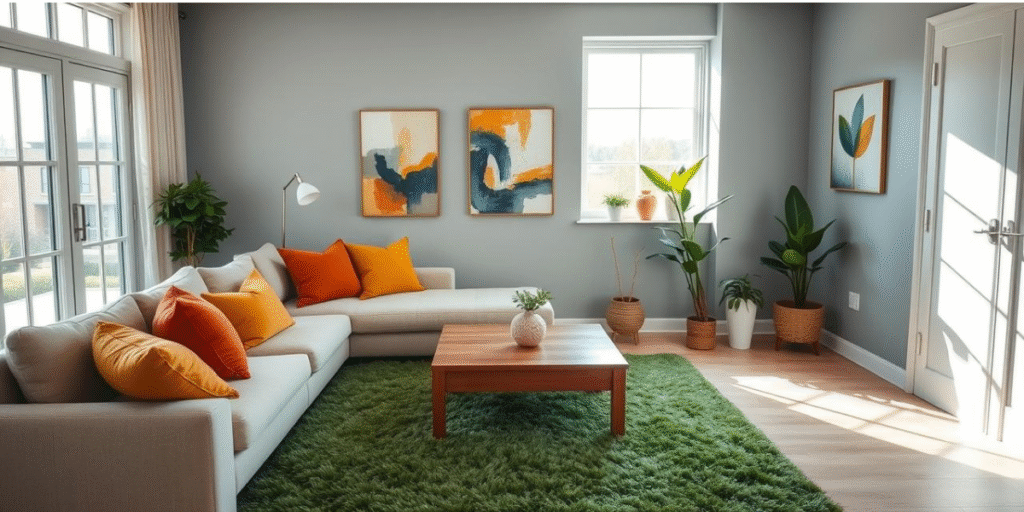
When picking colors, think about the room’s natural light, furniture, and decor. This helps create a balanced and harmonious space. For example, a room with lots of natural light can have bolder colors. But a room with little light should have lighter, more muted colors.
Using Warm Colors in Living Areas
Choosing the right colors for your living room is key. Warm colors like oranges and yellows make the space cozy and inviting. They’re great for relaxing and socializing. To enhance warm colors, create a focal point with a bold color and balance it with neutral tones.
Warm colors can also make a big room feel intimate. Use warm colors like beige or taupe on walls and furniture. This makes the space cozy and welcoming.
Creating Intimate Gathering Spaces
To make a space feel intimate, use warm colors on accent walls or furniture. This draws people together, creating closeness. Warm colors are also perfect for cozy reading nooks or comfy seating areas.
Accent Wall Strategies
Accent walls add warmth without overwhelming the room. Paint one wall in a bold, warm color and balance it with neutral tones. Warm colors on furniture and accessories add depth and interest. Warm colors make your living room cozy and inviting, perfect for relaxing and socializing.
Cool Colors for Personal Retreats
Creating a peaceful atmosphere in your personal retreats, like bedrooms and bathrooms, is key. Cool colors like blues, greens, and purples help a lot. They make you feel relaxed and calm, perfect for unwinding and refreshing.
You can add cool colors in many ways. Try soft blue walls in your bedroom or green accents with plants. Purple hues work well in bathrooms for a calming vibe. The goal is to mix cool colors right to make a peaceful space.
- Soft blues and whites for a calming bedroom atmosphere
- Mint greens and neutral tones for a refreshing bathroom ambiance
- Lavender purples and creamy whites for a relaxing and soothing atmosphere
Using cool colors in decoration makes your personal retreat a place of calm. It helps you relax and recharge after a busy day.
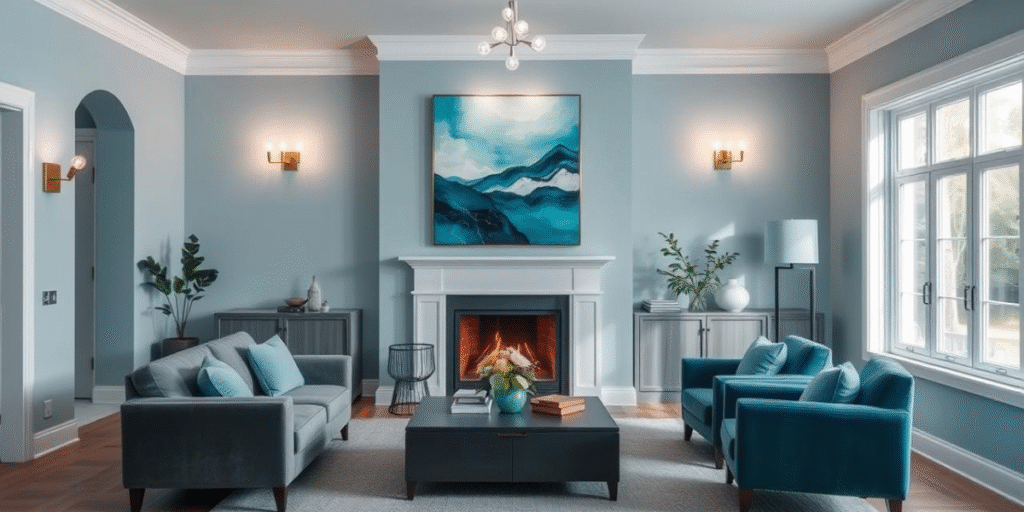
The Latest Trends in Color Temperature Design
Choosing the right colors for your interior design is key. It can make or break the feel of a room. Today, bold, vibrant colors are trending to add depth and personality.
Warm colors make spaces cozy and inviting. Cool colors bring calmness and serenity. Neutral tones help balance bold colors, creating harmony. Designers say finding the right mix of warm and cool tones is essential.
Modern Color Schemes
- Monochromatic color schemes with a mix of warm and cool tones
- Bold and vibrant colors used as accent walls
- Neutral tones used as a background to balance out bold colors
Designer Insights
Color temperature design is all about creating a mood and atmosphere in a room. By choosing the right colors, you can create a space that is both beautiful and functional.
Using the latest color trends can make your home stylish and modern. Don’t be afraid to experiment. Find the perfect mix of warm and cool tones to show off your personality and style.
Common Mistakes to Avoid with Color Temperature
Using colors in your home can be tricky. It’s easy to make a space feel off-putting. One big mistake is having too much warmth or coolness. This can be fixed by picking colors that balance each other well.
Some common mistakes in choosing colors include:
- Using too many bold colors, which can create a sense of chaos
- Not considering the natural light in the room, which can affect how colors appear
- Ignoring the color of furniture and decor, which can clash with the wall colors
To steer clear of these errors, think about the look you want. Choose colors that go well together. This way, you can make a space that feels cozy and inviting.
Making the Most of Warm and Cool Colors in Your Home
Starting your interior design journey? Remember, warm colors and cool colors greatly affect your living spaces. They can change how your home feels and looks. By knowing about color temperature, you can make your home beautiful and meaningful.
Choosing between warm colors like reds and oranges or cool colors like blues and greens is key. The right mix can change everything. Try out different colors and see what works best for you and your home.
Learning about warm and cool colors is a journey. But with what you’ve learned, you’re ready to make your home special. Let color make your home a place that inspires and uplifts you.


